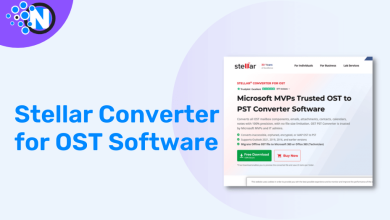Kling AI – Features, Use Cases, and Top Alternatives

I remember staring at my laptop at 2 AM, trying to make a 15‑second promo for my page. The idea was brilliant in my head – smooth transitions, cinematic shots, maybe even a little slow‑motion effect. What do I end up with? A stiff slideshow with awkward cuts that looked like a school project.
The worst part was that I did not have the budget for a professional editor or the patience to wrestle with After Effects. If that feeling of creative frustration sounds familiar, Kling AI is the shortcut I wish I had back then.
It takes a simple text or image and turns it into a realistic, scroll‑stopping video in minutes, finally letting your ideas look the way they do in your head. So, is this tool suitable for you?
Catch the features and use case of Kling AI in this guide. Also, I have mentioned some of its alternatives so you can have a complete toolkit.
What Is Kling AI?
Kling AI is a generative AI platform developed by Kuaishou Technology that transforms text descriptions or images into short video clips.
It supports both text‑to‑video and image‑to‑video generation, and delivers photorealistic video outputs at up to 1080p resolution and 30 fps. Video lengths range from 5 or 10 seconds up to approximately 2 minutes, depending on the plan.
Kling AI also enables video extension and advanced editing tools such as multi‑element swaps or negative prompts.
With models like Kling 1.6, 2.0, and more recent 2.1, it offers motion consistency and character fidelity that outpace many rivals. That’s the reason it is making its place among the best AI video tools.
Core Features of Kling AI
- Text‑to‑Video Generation
- Image‑to‑Video Animation
- Multi‑Element Editing
- Advanced Camera and Cinematic Controls
- Realistic Motion and Physics
- Resolution and Timing Control
- Audio and Sound Integration
- Negative Prompts and Style Controls
- Video Extension and Looping
1. Text‑to‑Video Generation
One of my favorite things about Kling AI is how effortlessly it can turn a single line of text into a cinematic video. Imagine typing something like, “A surfer riding golden waves at sunset, camera slowly circling him,” and in a minute, you are staring at a video that looks like it came from a commercial shoot.
You don’t need any video editing skills or hours of rendering. The latest versions, like 2.0 and 2.1, understand prompts more accurately, so if you describe camera movements, facial expressions, or even lighting moods, Kling usually nails them with surprising realism.

2. Image‑to‑Video Animation
We have all had that one still image that we wished could “come alive.” Kling AI does exactly that. You upload a single photo, maybe a character design, a product shot, or a landscape, and it animates the scene according to your instructions.
I once used it to animate a coffee cup steaming on a wooden table while sunlight passed through the window, and the effect looked like a lifestyle ad. Creators love this feature for memes, social content, or giving static art a touch of life that grabs attention.

3. Multi‑Element Editing
This feature is like having a tiny Hollywood VFX team in your pocket. With Multi‑Elements, you can point at parts of your generated video and tell Kling AI exactly what to change. Want to remove a distracting trash can from the background? Done. Want to replace it with a street lamp or a flower pot? Also done.
You can even add entirely new objects or characters into the frame without reshooting anything. It’s the kind of tool that turns small creative tweaks into a smooth, professional result.

4. Advanced Camera and Cinematic Controls
If you love that cinematic “wow” factor, this feature will feel magical. Kling AI lets you simulate real camera movements, like zooms, pans, tilts, and even dynamic tracking shots.
Combine that with lighting adjustments, depth‑of‑field effects, and motion blur, and suddenly your AI‑generated clip feels like it came from a short film. It is not only about moving images but also about adding that subtle polish that keeps viewers watching.
5. Realistic Motion and Physics
One thing that makes Kling AI stand out is how natural the motion feels. Characters don’t just “slide” across the screen. They walk, run, or interact with the environment in believable ways. Liquids splash, smoke drifts, and even a falling feather behaves the way you expect.
The latest 2.1 model is particularly good at lip‑sync and facial consistency, so if your video involves characters or dialogues, they look far more alive than in older AI tools.
6. Resolution and Timing Control
Nothing kills excitement faster than a great idea trapped in low quality. Kling defaults to 1080p at 30 fps, which is perfect for most quality online content. You can also create short 5‑ or 10‑second bursts or string them together into longer sequences of around 2 minutes.
If you are testing ideas, lower resolutions and shorter clips save credits, and once you are ready to publish, you can render in HD or even test its experimental 4K mode for extra sharpness.
7. Audio and Sound Integration
A cool thing many people miss is Kling’s ability to handle sound. While it is not a full music studio, it can pair your clips with ambient audio or basic sound effects.
Adding subtle wind, water, or city sounds instantly makes a short AI video feel immersive without needing a separate editor.
8. Negative Prompts and Style Controls
Sometimes, the secret to getting a perfect shot is not just telling the AI what you want. It also involves what you don’t want. Kling supports negative prompts, so if you hate random blur, extra characters, or unwanted objects, you can exclude them.
On top of that, it has style presets that can instantly shift your video into cinematic, anime, hyper‑realistic, or painterly looks. It is like having multiple visual directors at your disposal.
9. Video Extension and Looping
Let’s say you generated a 10‑second shot you love, but you need a 20‑second ad. Kling AI can extend your existing video without breaking its flow, and even loop it naturally.
It is a game‑changer for content marketing or creators who want longer content without starting from scratch.
Kling AI Pricing
| Plan Name | Credits/Month | Monthly Price | Annual Price | Key Benefits |
| Standard | 660 | $6.99 | $79.2 | Longer clips, faster rendering, watermark removal for personal use |
| Pro | 3000 | $25.99 | $293.04 | HD videos, priority processing, access to Multi‑Element editing and presets |
| Premier | 8000 | $64.99 | $728.64 | Extended durations (up to 2 min), advanced camera controls, faster queue time |
A free plan is available to use the basic features of Kling AI and determine its capabilities. And if you love its functionalities, you can subscribe to the premium tier plans. The Kling AI membership plans and their pricing details are below:
Use Cases Where Kling AI Shines
I always say that knowing a tool’s features is one thing, but understanding how it can actually save your time, money, or frustration is where the real magic happens. Kling AI is more than just a cool tech demo. It solves real problems for creators, marketers, and even educators.
Let me take you through some situations where Kling AI truly shines, and maybe you will see yourself in one of these.
1. Content Marketing and Advertising
I can’t count how many times I have seen small businesses or solo creators struggle to produce eye‑catching ads because traditional video production is expensive and slow.
Imagine you are launching a new coffee brand. Instead of renting a studio, hiring a videographer, and waiting weeks for edits, you type in Kling AI:
“A steaming coffee cup on a wooden table, golden morning sunlight hitting the cup, soft camera pan.”
Within minutes, Kling gives you a cinematic clip ready for Instagram or Facebook ads. For brands that need constant visual content, it is a lifesaver. It is like having a creative team on call 24/7 without the cost.
📌 Fact: Some brands report up to 78% faster content creation with cost savings around 65% or more compared to filming, due to the use of Kling AI.
2. Entertainment and Social Media
Social media runs at speed. Trends appear, peak, and vanish in a day. If you have ever thought, “I wish I could turn this funny idea into a video before the trend dies,” Kling AI gives you that edge.
I once tested this with a meme. I animated a still image of a cat wearing sunglasses, lounging on a beach while holding a coconut drink. It looked so natural that my friend thought I downloaded a stock video.
Platforms like TikTok, Instagram, and YouTube focuses on this quick‑to‑create, scroll‑stopping content.
3. Film Pre‑Visualization and Game Design
If you have ever thought of stepping into filmmaking or game development, you know the struggle: explaining your vision to a team with only sketches or rough storyboards. Kling AI can generate moving previews of your scenes, complete with camera movements, lighting, and realistic motion.
Game developers are using it to prototype cutscenes and environmental sequences before a single 3D model is finalized. Filmmakers can pitch concepts with moving visuals instead of static slides. That’s a huge leap in communication and saves tons of time in pre‑production.
4. Education and E‑Learning
To be very honest, students get bored with slideshows and text‑heavy lectures. But imagine showing them a short AI‑generated animation instead. A history teacher could animate an ancient battle scene. A science teacher could show water molecules dancing in slow motion.
E‑learning creators especially love this because animated explainer videos are expensive to outsource. Kling AI makes learning visually exciting without the need to hire an animator.
5. E‑Commerce and Product Showcases
If you sell products online, you know that photos only go so far. People love motion. They want to see how a watch glimmers in sunlight or how a pair of sneakers looks when someone walks in them.
With Kling, you can animate product images to create high‑end visual ads or rotating showcase clips. Imagine turning a simple shoe photo into a short clip where the shoe slowly spins under a spotlight.
That’s the kind of content that grabs buyers’ attention and increases conversions, without a photoshoot.
6. Personal Creativity and Passion Projects
Not everything has to be commercial. Sometimes, you just want to bring your imagination to life. Maybe it is animating a short story you wrote, creating a surreal landscape for a music video, or making a birthday surprise video for a friend.
I once generated a short clip of a paper boat sailing across a moonlit river just because the idea felt peaceful. These little personal projects often end up being portfolio pieces or social content that sparks unexpected opportunities.
Top 5 Kling AI Alternatives That Are Really Impressive
While Kling AI is an impressive tool for creating realistic AI‑generated videos, it is not the only player in town. Depending on your goals, like better collaboration, character consistency, or enterprise‑level editing, you might find another platform that suits your workflow better.
So, what are the top tools like Kling AI? I have explained some of the most popular alternatives and when you might prefer them over Kling.
1. Runway Gen‑2 / Gen‑3
Runway is a powerful AI video generation and editing platform widely used by creators and professionals. It allows you to generate short videos from text prompts, edit footage using its built‑in timeline, and even apply effects like masking and background removal.
Its Gen‑3 Alpha model delivers higher realism and smooth camera motions, which makes it suitable for marketing, film pre‑visualization, and videos for social media platforms. Runway is ideal if you want a complete AI video solution with integrated editing and team collaboration tools.

2. Pika Labs
Pika Labs focuses on quick and creative AI video generation for social media and short‑form content. It is perfect for animating images, turning prompts into fun, stylized clips, and producing shareable content fast.
While it does not achieve the hyper‑realistic physics that Kling AI offers, Pika’s speed, simplicity, and community presets make it beginner‑friendly. It works best for TikTok, Instaram videos, YouTube Shorts, and meme creators who prioritize quick production over cinematic realism.

3. Sora (OpenAI)
Sora is OpenAI’s advanced text‑to‑video model designed for storytelling and multi‑scene generation. Unlike most AI tools that focus on single clips, Sora can produce longer sequences with smooth transitions. Thus, it is great for short films, explainer videos, or narrative concepts.
While it is still in limited rollout, early results show impressive scene coherence and creative flexibility. If you want to bring storyboards or scripts to life in a visually engaging way, Sora is an exciting alternative to consider.

4. Hailuo MiniMax
Hailuo MiniMax specializes in AI‑powered video creation with a focus on avatars and scripted content. It can generate talking characters that lip‑sync to your voice or text. These attributes make it perfect for tutorials, corporate training, or educational videos.
Features like director mode and script integration allow users to control expressions and timing without needing video editing experience. While it is not as strong in cinematic free‑motion as Kling AI, it shines for professional presentation and e‑learning content production.

5. Kaiber AI
Kaiber AI is a creative AI video generator loved by artists, musicians, and digital storytellers. It allows users to transform artwork, photos, or simple prompts into visually striking animated videos. Kaiber stands out for its music video generation feature, where visuals sync with beats to produce unique artistic sequences.
While it leans more toward stylized and abstract effects rather than hyper‑realism, Kaiber is a fantastic alternative for creators who want highly creative, visually appealing content for social media or personal projects.

Final Thoughts
I hope this guide has given you a clear understanding of what Kling AI can do and where it truly excels. I love how it democratizes cinematic video generation. No matter if you are a marketer, educator, creator, or hobbyist, you can benefit from this tool. It combines strong realism, prompt control, editing flexibility, and affordability in a way that feels fresh.
If you have got an idea in mind, I encourage you to try Kling’s free plan, experiment with prompts, and see what it can bring to life. And if you are comparing tools, I would say Kling is a standout wherever motion realism and prompt adherence matter.
People Also Ask
What is Kling AI?
Kling AI is a software program that lets you generate videos and animations from simple texts.
How much is Kling AI?
Kling AI pricing plans start from $6.99 per month for the Standard plan, while the Pro plan costs $25.99 per month, and the price of Premier plan is $64.99 per month.
Is Kling AI app available?
Yes. You can download the Kling AI app from Play Store for Android and from App Store for iPhone.
Is Kling AI Free?
Kling AI offers a free trial to use its basic features. However, if you want to enjoy premium perks, you have to purchase a subscription plan.




